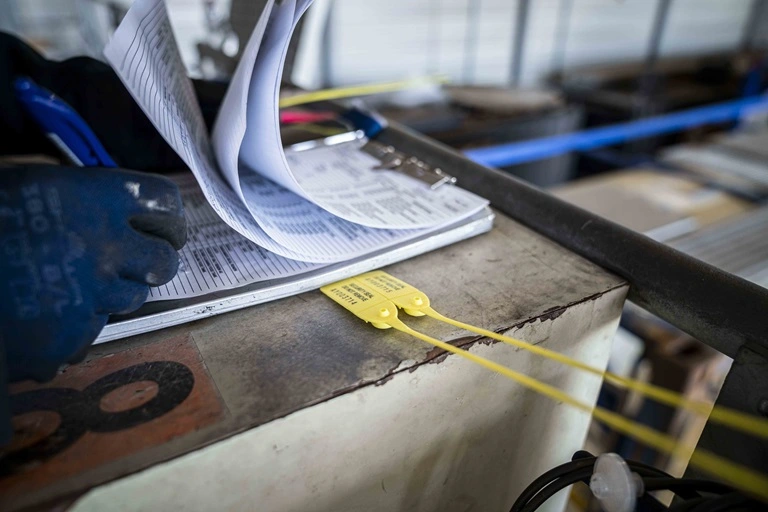Tank periodic maintenance inspection
The periodic maintenance of tanks and pressure vessels is a critical aspect of ensuring their safe operation over extended periods. This service involves a comprehensive examination of tanks to ensure they remain in compliance with relevant standards, regulations, and good engineering practice.
During the inspection, a trained team will assess the structural integrity, material condition, and operational performance of the tank. This includes checking for signs of corrosion, cracks, erosion, or other forms of degradation that may compromise safety or efficiency. The scope of this service is designed to align with international standards such as ISO 17467-2, ASME Section VIII, and EN 13445, which provide guidelines on the safe design, construction, and inspection of pressure vessels.
The primary goal of tank periodic maintenance inspections is to identify potential issues early, preventing catastrophic failures that could result in significant financial loss or personal injury. By adhering to a strict schedule of inspections, quality managers can ensure their assets are maintained at optimal levels, thereby extending the useful life of tanks and reducing the need for costly repairs or replacements.
The inspection process typically includes visual examinations, non-destructive testing (NDT) methods such as ultrasonic testing, radiography, and magnetic particle testing, and sometimes even destructive testing if necessary. The choice of NDT method depends on the specific material and design of the tank being inspected.
| Method | Description | Purpose |
|---|---|---|
| Visual Inspection | A thorough examination using naked eye or low-power magnification. | To identify visible defects, corrosion patterns, and other anomalies. |
| Ultrasonic Testing (UT) | Uses high-frequency sound waves to detect internal flaws without damage. | To measure wall thickness reduction and locate internal cracks or inclusions. |
| Radiography | Involves the use of X-rays or gamma rays to create images of internal structures. | To identify imperfections, such as cracks or porosity, within the tank walls. |
| Magnetic Particle Testing (MPI) | Uses magnetic fields and fine iron particles to detect surface-breaking flaws. | To locate cracks, seams, or other discontinuities on metal surfaces. |
The frequency of inspections is determined by the tank’s design pressure, material type, service environment, and risk assessment. For example, tanks used in harsh environments such as offshore drilling rigs may require more frequent inspections than those used indoors for storage or distribution purposes.
After completing the inspection, a detailed report will be provided to the client outlining any findings along with recommendations for corrective actions if necessary. This ensures that all relevant parties are aware of the tank’s condition and can make informed decisions about its future use.
Industry Applications
- Oil and gas industry
- Chemical processing plants
- Mining operations
- Pharmaceutical manufacturing facilities
- Food and beverage production units
- Petrochemical refining complexes
- Water treatment and wastewater management systems
- Power generation plants
- Automotive manufacturing
- Aerospace sector
The inspection of tanks is essential in these industries to ensure compliance with regulatory requirements, enhance safety standards, and maintain operational efficiency. In the oil and gas industry, for instance, pressure vessels are used extensively in both exploration and production processes. Regular inspections help prevent accidents such as explosions or leaks that could lead to environmental contamination.
Chemical processing plants rely heavily on tanks for storing hazardous materials during manufacturing and storage phases. Ensuring these containers meet stringent safety standards helps protect workers from exposure to dangerous chemicals while also safeguarding the environment against accidental releases.
In mining operations, tanks are used for transporting ore concentrate or other valuable minerals. Proper maintenance of these vessels is crucial not only for operational continuity but also to avoid costly downtime due to failures.
International Acceptance and Recognition
- The American Society of Mechanical Engineers (ASME) Section VIII, Division 1
- The European Pressure Equipment Directive (PED)
- British Standards Institution (BSI) PD5500
- American Petroleum Institute (API) Standard 653
- International Organization for Standardization (ISO) standards
- European Committee for Standardization (CEN) standards
- United Kingdom Health and Safety Executive (HSE)
- Occupational Safety and Health Administration (OSHA)
The inspection of tanks is widely recognized internationally due to its importance in various industries. Compliance with these standards ensures that the maintenance practices used are consistent across borders, promoting a global level of safety and reliability.
The ASME Section VIII, Division 1, provides guidelines for the design, fabrication, inspection, and testing of pressure vessels. It is widely accepted in North America and many countries around the world due to its comprehensive approach to ensuring safe design practices. Similarly, the PED sets out requirements for manufacturers, importers, and distributors of pressure equipment within the European Union.
The British Standards Institution's PD5500 offers additional guidance on the management of pressure equipment throughout its lifecycle, emphasizing the importance of proactive maintenance strategies over reactive ones. Meanwhile, API Standard 653 provides specific recommendations for the internal inspection of storage tanks in petroleum refineries and terminals.
Use Cases and Application Examples
The periodic maintenance inspection of tanks is applicable to a wide range of applications where large-scale storage or containment of liquids or gases is necessary. Below are some practical examples:
- Oil Storage Tanks: Regular inspections ensure that oil reserves remain intact, preventing leaks and spills in sensitive environments.
- Gas Cylinders: These are inspected to verify their integrity before being filled with compressed gases for transportation or use in industrial processes.
- Water Treatment Plants: Tanks used in water treatment facilities need frequent checks to maintain the quality of potable water supplies.
- Petrochemical Storage Units: Large tanks holding volatile chemicals must undergo meticulous inspections to avoid explosions and fires.
- Nuclear Power Plant Containment Vessels: These require stringent inspections due to their critical role in safeguarding against radiation leaks.
In each of these scenarios, the periodic maintenance inspection plays a vital role in maintaining safety standards and operational efficiency. By adhering to strict protocols and using advanced NDT techniques, we can ensure that tanks continue to perform reliably even under challenging conditions.





